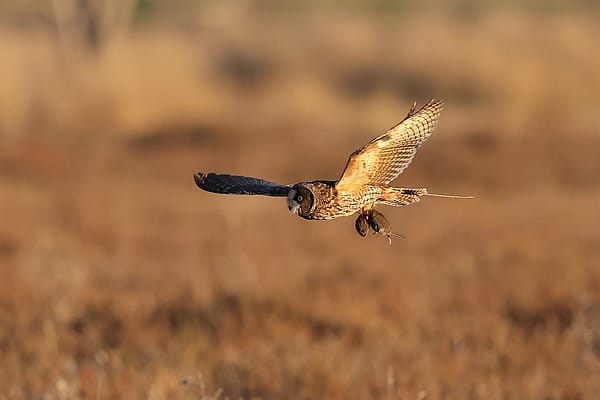
If I Only Had Eyelids Like a Bird
If I had eyelids like a bird, I wouldn’t have to worry about the Wyoming wind. Raptors and other birds not only have two eyelids, they have a third eyelid as well. Two of their eyelids are like ours, moving up and down to close their eyes. Like us, owls close their eyes by moving the top eyelid down, while other birds move the bottom up. In most avian species, the true eyelids are used for sleeping. In owls, however, the upper eyelid also closes when the owl blinks.
The third eyelid is called the nictitating membrane. In addition to birds, nictitating membranes can also be found in some reptiles, mammals, and sharks. It is this membrane, or third eyelid, that birds primarily use to blink. In most birds this is a thin, semi-transparent eyelid which moves horizontally or diagonally from the inside to the outside of a bird’s eye. In owls, however, the membrane is opaque.*
A quick blink with this third eyelid cleans and moisturizes the eye. When closed, the membrane also helps to protect the bird’s eye while, in most species, still allowing some vision depending on the amount of transparency of the nictitating membrane. Many birds use this membrane to protect their eyes while feeding their chicks and raptors may close them when attacking prey. Some birds use the membrane like we use a pair of goggles. Peregrine falcons are famous for their fast dives and are known to use the nictitating membrane to protect their eyes from wind and dust as they rocket toward their prey. Loons close the membrane when diving into the water after fish. In vultures, the membrane will protect the birds when putting their heads inside the carcass they are feeding on. Without the membrane, forest raptors could more easily scratch their eyes while chasing prey. Red-tailed hawks hunting from a high, open perch may use the nictitating membrane to protect and clean their eyes during high winds, rain, and snow. So if I had eyelids like a bird, I wouldn’t have to worry about the dust stirred up by our Wyoming wind.

This video will give you a close up view of a juvenile eagle closing its lower eyelid, as well as the movement of the blue colored nictitating membrane (the 3rd eyelid).
https://www.youtube.com/watch?v=7oAN7L2_E6U
*Reference for opaque membrane in Owls:
Delaware Valley Raptor Center
And The Barn Owl by D.S. Bunn, A.B. Warburton, and R,D,S, Wilson, page 35.
Photos
Bald Eagle Photo by: Pat Gaines, Attribution License
Ostrich photo, © Len Radin, Attribution License
All other photos courtesy of author, Anne Hay © https://www.flickr.com/photos/157982666@N07/
Written By
Anne Hay
Anne Hay has a Bachelor's degree in Elementary Education and a Master's in Computers in Education. She spent most of her working years teaching third grade at Livingston School in Cody, Wyoming. After retiring she began doing a variety of volunteer work for the Buffalo Bill Center of the West’s Draper Natural History Museum. Anne loves nature and has a concern for the environment. She believes that educating the public, so that they will have a better understanding and appreciation for the natural world, is very important. Because of this belief, volunteering at the Center is a perfect fit. She spends time in the Draper Lab, observing eagle nests for Dr. Charles Preston’s long-term research project on nesting golden eagles, writing observation reports of raptor sightings in the Bighorn Basin, and working with the Draper Museum Raptor Experience. Anne states that, “Having a bird on my glove, is one of my all time favorite things in life.”














